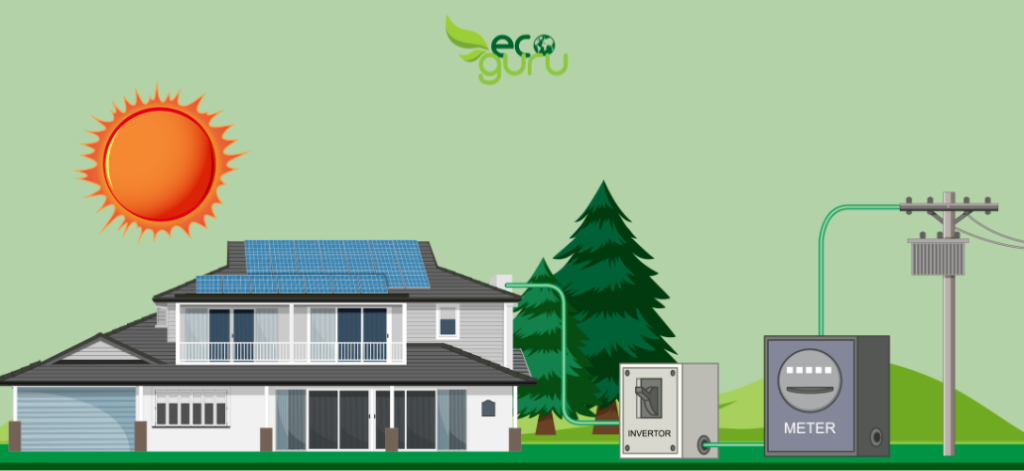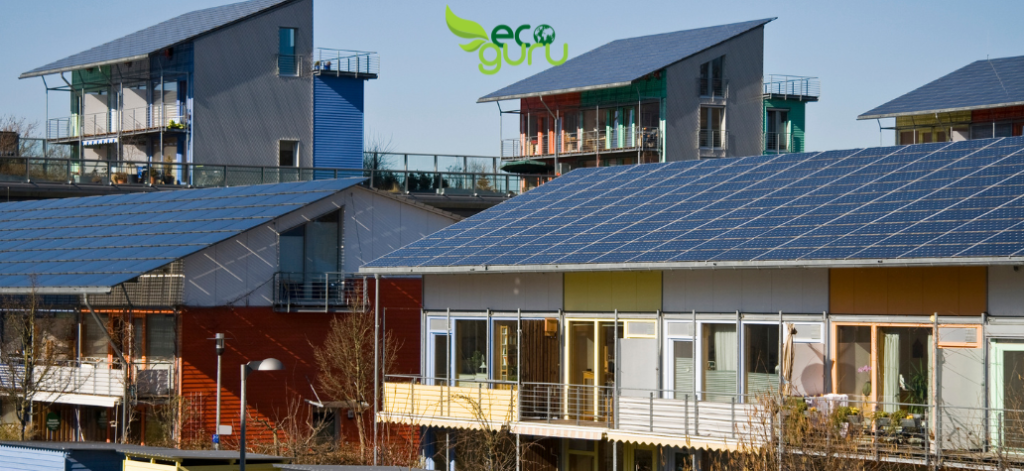Solar Energy: Empowering a Greener and Cleaner Planet
Imagine a world where energy is harnessed without harming our planet—a world where every ray of sunlight can be transformed into a powerful source of electricity. This vision isn’t just a distant dream; it’s becoming a reality with the rise of solar energy.
Solar energy is the harnessing of sunlight to generate electricity or heat. It’s a clean, renewable resource that is not only abundant but also eco-friendly. By capturing the sun’s energy, we can significantly reduce our carbon footprint and transition away from fossil fuels.
India, with its diverse climate and energy needs, stands to gain immensely from solar power. With a population of over a billion, India’s energy demands are substantial. Solar energy provides a sustainable solution to address these demands while mitigating the harmful effects of conventional energy sources. Let’s explore how India is leading the way in the solar energy revolution.
The Solar Energy Revolution in India
In recent years, India has witnessed a remarkable growth in solar energy adoption. This growth is driven by several factors, including increasing awareness of environmental issues, government incentives, and advancements in solar technology. The Indian government’s ambitious targets for solar capacity expansion have propelled the nation into the forefront of the global solar energy arena.
One cannot discuss solar energy in India without mentioning iconic projects like the Kamuthi Solar Power Project in Tamil Nadu, one of the largest solar farms globally, or the Charanka Solar Park in Gujarat, a shining example of sustainable energy generation. These projects serve as beacons of hope, demonstrating India’s commitment to a greener future.
India’s solar journey isn’t just about generating electricity; it’s about addressing the urgent need for sustainability. Solar energy plays a vital role in reducing greenhouse gas emissions, providing clean power to remote areas, and improving energy access. By embracing solar energy, India is not only reducing its carbon footprint but also enhancing energy security and supporting economic development.
Stay with us as we unravel the fascinating world of solar energy, its incredible benefits, and how it’s revolutionizing India’s energy landscape.
Benefits of Solar Energy

Solar energy brings forth a multitude of advantages that extend beyond a cleaner planet. Let’s delve into the three primary benefits that make solar power an attractive choice for homeowners, businesses, and the environment alike.
Lowering carbon footprint
Imagine reducing your carbon footprint while still enjoying a comfortable and modern lifestyle. Solar energy allows you to do just that. By harnessing the sun’s power, solar panels generate electricity without emitting harmful greenhouse gases, such as carbon dioxide (CO2). This significant reduction in carbon emissions plays a vital role in combatting climate change and creating a more sustainable future for generations to come.
Cost savings for homeowners and businesses
In the world of solar energy, it’s not just about going green; it’s about saving green too. Homeowners and businesses can experience substantial cost savings by investing in solar panels. With the abundant sunlight in India, solar power can significantly reduce electricity bills. Additionally, businesses can benefit from incentives and tax credits, making solar installations a wise financial choice.
Energy independence and reliability
Solar energy offers a sense of energy independence that is unparalleled. No more worrying about power outages or rising electricity costs. Solar panels can provide a reliable source of electricity, especially in remote areas where grid connectivity may be unreliable. With the addition of battery storage systems, you can store excess energy for use during cloudy days or at night, ensuring uninterrupted power supply.
How Solar Energy Works

Now that we’ve explored the benefits of solar energy, let’s demystify the science behind it. Understanding how solar energy works is key to appreciating its potential fully.
Explain the photovoltaic process
At the heart of solar energy is the photovoltaic process. Solar panels are equipped with photovoltaic cells that convert sunlight into electricity. When sunlight hits these cells, it excites electrons, creating a flow of electricity. This direct conversion of sunlight into electrical energy is a marvel of modern science and technology.
Describe solar panels and their components
Solar panels consist of multiple photovoltaic cells connected in a specific arrangement. These cells are typically made from semiconductor materials, like silicon. They are encased in protective glass and supported by a metal frame. Solar panels are designed to capture sunlight and convert it into direct current (DC) electricity.
Mention the role of inverters and batteries
While solar panels generate DC electricity, most of our electrical devices run on alternating current (AC). This is where inverters come into play. Inverters convert the DC electricity produced by solar panels into AC electricity that can be used in homes and businesses.
For optimal energy utilization, many solar installations include battery storage systems. These batteries store excess energy generated during sunny days for use at night or during cloudy weather, enhancing the reliability of your solar power system.
With a solid understanding of these fundamental concepts, you’re well on your way to appreciating the immense potential of solar energy. In our next section, we’ll explore how solar energy is integrated into our everyday lives.
Solar Energy in Everyday Life

Solar energy isn’t just a futuristic concept; it’s a reality that’s already shaping our daily lives. Whether you’re a homeowner, a business owner, or residing in a remote village, solar energy is making a meaningful impact.
Residential solar installations
In urban and rural areas alike, residential solar installations are becoming increasingly popular. Homeowners are harnessing the power of the sun to generate clean electricity and reduce their reliance on traditional power sources. Solar panels mounted on rooftops capture sunlight, providing households with a green and cost-effective energy alternative. The adoption of solar power at the residential level is a critical step towards a sustainable future.
Commercial and industrial applications
Businesses and industries are also realizing the advantages of solar energy. From powering manufacturing units to lighting up commercial spaces, solar installations are reducing operational costs and carbon footprints simultaneously. Large-scale solar arrays are not only environmentally friendly but also financially prudent, offering significant savings and long-term benefits.
Rural electrification and its impact
In remote and off-grid areas, solar energy is a game-changer. Solar microgrids and standalone systems are bringing electricity to regions that were previously without access to reliable power sources. This has a transformative impact on education, healthcare, and economic opportunities in these areas. Solar energy is empowering rural communities and contributing to their development.
Overcoming Solar Energy Challenges
While the potential of solar energy is immense, there are challenges to address. Let’s take a closer look at how these challenges are being met head-on.
Address common misconceptions
Misconceptions and myths about solar energy can deter potential adopters. It’s crucial to dispel these misconceptions and provide accurate information. Common myths, such as “solar panels are too expensive” or “solar energy is unreliable,” can be debunked with real-world examples and data.
Discuss issues like intermittency and storage
One of the challenges of solar energy is its intermittency. Solar power generation depends on sunlight, which varies throughout the day and across seasons. To address this issue, advanced battery storage systems are being developed to store excess energy generated during sunny periods for use during low-light hours. These innovations are improving the reliability of solar power.
Explain government incentives and subsidies
Governments around the world, including India, recognize the importance of solar energy and offer incentives and subsidies to promote its adoption. These incentives can include tax credits, feed-in tariffs, and net metering programs. By taking advantage of these initiatives, individuals and businesses can make solar energy even more financially attractive.
FAQs Empowering a Greener and Cleaner Planet

Understanding solar energy can raise several questions, and we’re here to provide answers to some of the most common queries.
How do solar panels work?
Solar panels work by capturing sunlight using photovoltaic cells. When sunlight hits these cells, it creates an electrical current, which is then converted into usable electricity for homes or businesses.
What is the cost of installing solar panels?
The cost of installing solar panels can vary based on factors like system size, location, and equipment quality. However, government incentives and falling solar panel prices have made installations more affordable, with a relatively quick return on investment.
How long do solar panels last?
Solar panels have a lifespan of 25-30 years or more. They typically come with warranties guaranteeing their performance for a certain period, making them a long-term investment.
Is solar energy reliable during cloudy days?
While solar panels are less efficient on cloudy days, they can still generate electricity. Additionally, battery storage systems can store excess energy from sunny days for use during cloudy or nighttime conditions, enhancing reliability.
Are there government incentives for solar installations in India?
Yes, the Indian government offers various incentives and subsidies to promote solar installations. These incentives include tax benefits, subsidies, and net metering policies that allow users to sell excess energy back to the grid.
The Future of Solar Energy in India
A. Discuss upcoming innovations and technologies
The future of solar energy in India looks promising, with ongoing advancements in technology. Innovations such as more efficient solar panels, improved energy storage solutions, and grid integration technologies are on the horizon. These innovations will make solar energy more accessible and dependable.
B. Predict the growth of solar energy in India
The growth trajectory of solar energy in India is expected to continue its upward trend. The government’s commitment to expanding solar capacity and the decreasing cost of solar technology will drive this growth. It’s predicted that solar energy will play a substantial role in India’s energy mix.
C. Highlight India’s role in global clean energy efforts
India has emerged as a leader in the global transition to clean energy. As one of the world’s largest solar markets, India is setting an example for other nations. Its contributions to global clean energy efforts, along with its ambitious targets and policies, showcase India’s commitment to a greener and cleaner planet.
As we look ahead to the future of solar energy in India, it’s clear that this renewable resource will continue to empower a sustainable and eco-friendly tomorrow.
Conclusion
In our journey through the world of solar energy, we’ve uncovered the remarkable potential of this renewable resource and its transformative impact on India’s energy landscape. Let’s recap the essential points we’ve explored:
Solar energy is a clean, sustainable, and renewable resource that harnesses the power of the sun to generate electricity.
India is experiencing a solar energy revolution, with substantial growth in solar installations, key projects, and government support.
The benefits of solar energy include reducing carbon footprints, cost savings, energy independence, and reliability.
Solar energy works by using photovoltaic cells to convert sunlight into electricity, with the assistance of inverters and, optionally, battery storage.
Solar energy is integrated into everyday life through residential installations, commercial applications, and rural electrification efforts.
Challenges like intermittency and misconceptions are being addressed, and government incentives are making solar installations financially attractive.
The future of solar energy in India holds promise with ongoing innovations, predicted growth, and India’s significant role in global clean energy efforts.
Our world faces pressing environmental challenges, from climate change to pollution. Embracing clean energy sources like solar power is not just an option; it’s a necessity. By choosing solar energy, you become a part of a global movement towards a greener and cleaner planet. Your decision contributes to reducing greenhouse gas emissions, improving air quality, and preserving our planet for future generations.
The journey to a sustainable future begins with the choices we make today. Solar energy empowers us to make a difference—one ray of sunlight at a time. Let’s join hands in the pursuit of a brighter, cleaner, and more sustainable world.
Thank you for exploring the world of solar energy with us. Together, we can light up a brighter future.
Check out other best solar products to use
- Best Solar Powered Products For Home In India
- Best Solar Powered Outdoor Lights In India
- Best Solar Water Heaters In India
- Best Portable Solar Charger And Power Bank
Also, check out this list of other eco-friendly products, that you can embrace to lead a eco-friendly lifestyle.


Comments
Comments are disabled for this post